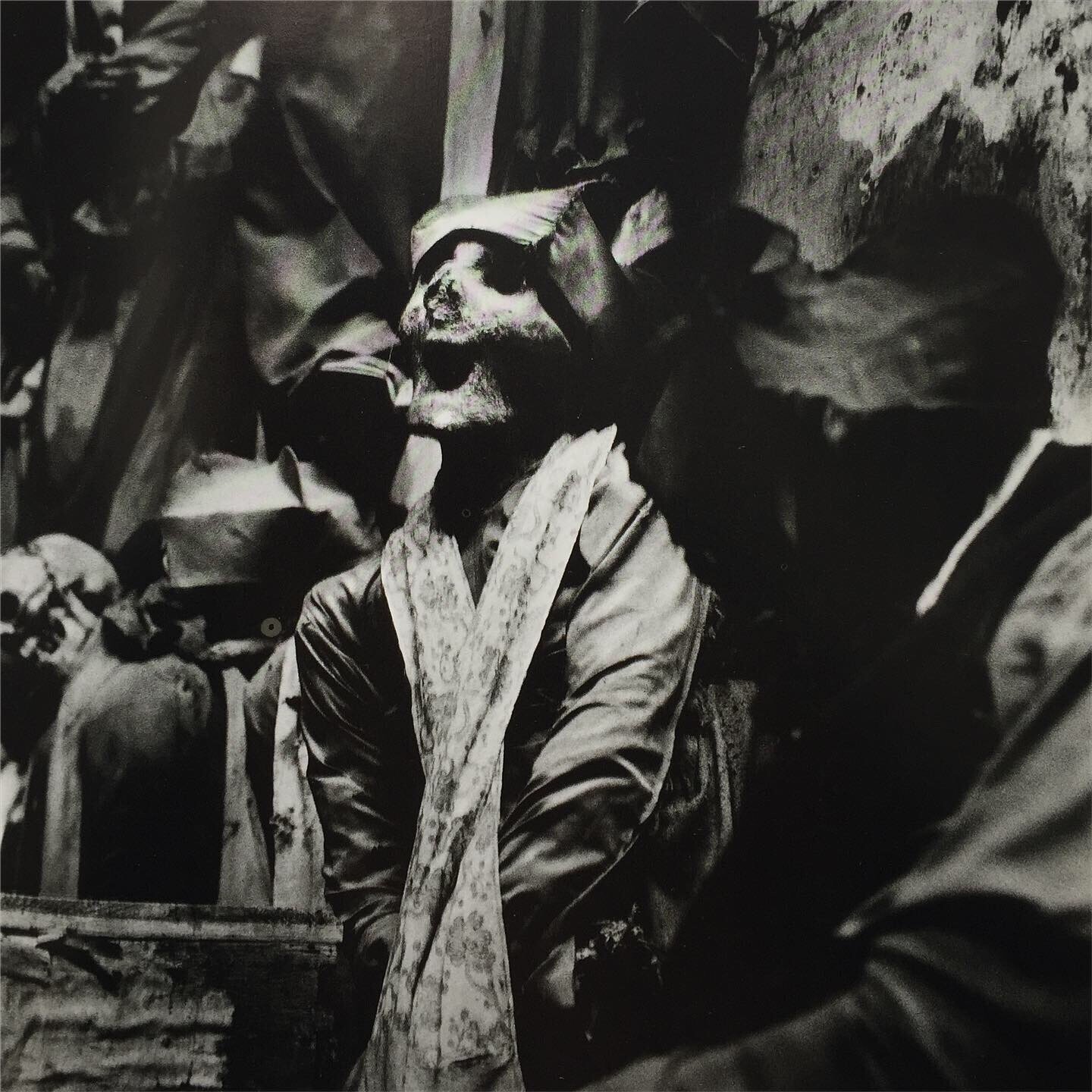Portraits in Life and Death by Peter Hujar
This book is structured in 2 parts, the first 29 images portraits of Hujar’s contemporaries, amongst them the writers Susan Sontag (who wrote the book’s introductory text) and William Burroughs and the dancer T.C.; the following 11 of the semi-preserved, clothed bodies of 19th century Sicilians found in the catacombs beneath a church in Palermo. Hujar photographed these remains in 1963 when visiting the city with his lover Paul Thek, before the living portraits comprising the first part of the book were taken on his return to America.
‘In the first part of this selection of Peter Hujar’s work, fleshed and moist-eyed friends and acquaintances stand, sit, slouch, mostly lie - and are made to appear to meditate on their own mortality. Do meditate, whether they - I - he (for the photographer is among his subjects) acknowledge it or not. We no longer study the art of dying, a regular discipline and hygiene in older cultures; but all eyes, at rest, contain that knowledge. The body knows. And the camera shows, inexorably. The Palermo photographs - which precede these portraits in time - complete them, comment upon them. Peter Hujar knows that portraits in life are always, also, portraits in death. I am moved by the purity and delicacy of his intentions. If a free human being can afford to think of nothing less than death, then these memento mori can exorcise morbidity as effectively as they evoke its sweet poetry and it’s panic.’ Sontag
Scarce first edition. Softcover. Very good condition other than slight yellowing due to age. 1976
This book is structured in 2 parts, the first 29 images portraits of Hujar’s contemporaries, amongst them the writers Susan Sontag (who wrote the book’s introductory text) and William Burroughs and the dancer T.C.; the following 11 of the semi-preserved, clothed bodies of 19th century Sicilians found in the catacombs beneath a church in Palermo. Hujar photographed these remains in 1963 when visiting the city with his lover Paul Thek, before the living portraits comprising the first part of the book were taken on his return to America.
‘In the first part of this selection of Peter Hujar’s work, fleshed and moist-eyed friends and acquaintances stand, sit, slouch, mostly lie - and are made to appear to meditate on their own mortality. Do meditate, whether they - I - he (for the photographer is among his subjects) acknowledge it or not. We no longer study the art of dying, a regular discipline and hygiene in older cultures; but all eyes, at rest, contain that knowledge. The body knows. And the camera shows, inexorably. The Palermo photographs - which precede these portraits in time - complete them, comment upon them. Peter Hujar knows that portraits in life are always, also, portraits in death. I am moved by the purity and delicacy of his intentions. If a free human being can afford to think of nothing less than death, then these memento mori can exorcise morbidity as effectively as they evoke its sweet poetry and it’s panic.’ Sontag
Scarce first edition. Softcover. Very good condition other than slight yellowing due to age. 1976
This book is structured in 2 parts, the first 29 images portraits of Hujar’s contemporaries, amongst them the writers Susan Sontag (who wrote the book’s introductory text) and William Burroughs and the dancer T.C.; the following 11 of the semi-preserved, clothed bodies of 19th century Sicilians found in the catacombs beneath a church in Palermo. Hujar photographed these remains in 1963 when visiting the city with his lover Paul Thek, before the living portraits comprising the first part of the book were taken on his return to America.
‘In the first part of this selection of Peter Hujar’s work, fleshed and moist-eyed friends and acquaintances stand, sit, slouch, mostly lie - and are made to appear to meditate on their own mortality. Do meditate, whether they - I - he (for the photographer is among his subjects) acknowledge it or not. We no longer study the art of dying, a regular discipline and hygiene in older cultures; but all eyes, at rest, contain that knowledge. The body knows. And the camera shows, inexorably. The Palermo photographs - which precede these portraits in time - complete them, comment upon them. Peter Hujar knows that portraits in life are always, also, portraits in death. I am moved by the purity and delicacy of his intentions. If a free human being can afford to think of nothing less than death, then these memento mori can exorcise morbidity as effectively as they evoke its sweet poetry and it’s panic.’ Sontag
Scarce first edition. Softcover. Very good condition other than slight yellowing due to age. 1976








